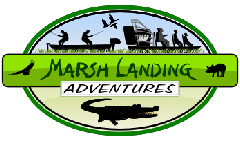Airboat Tours in the different Florida Seasons
We do our airboat tours year around. Each time of the year hold something different for our airboat tours and wildlife. Because we deal with Mother Nature and do not disturb the wildlife, we can't tell you how many alligators, Bald Eagles, snakes, turtles and more you will see. We take Pride in preserving the beauty of the Everglades and the wildlife. We will start off with Springtime, which starts around March and goes to May. Cool nights, warm days and not as much humidity. If you coming out at this time of year, just remember, it is a lot cooler on the water going 15-25 mph than it is on the land, so dress warmer than you normally would. This time of year is when the wildlife in our area start their mating / breeding season. The animals become very active in our area. Male alligators start searching for a mate, bellowing, and sometimes ever fight over females. We keep our distance for everyone's safety, theirs and ours. Summertime is where we head next and it gets hot, I mean very hot! Highs in the upper 90's, heat index well over 100. June is when it all begins, not only summer, but also Hurricane season. Yes, that is a real season...





